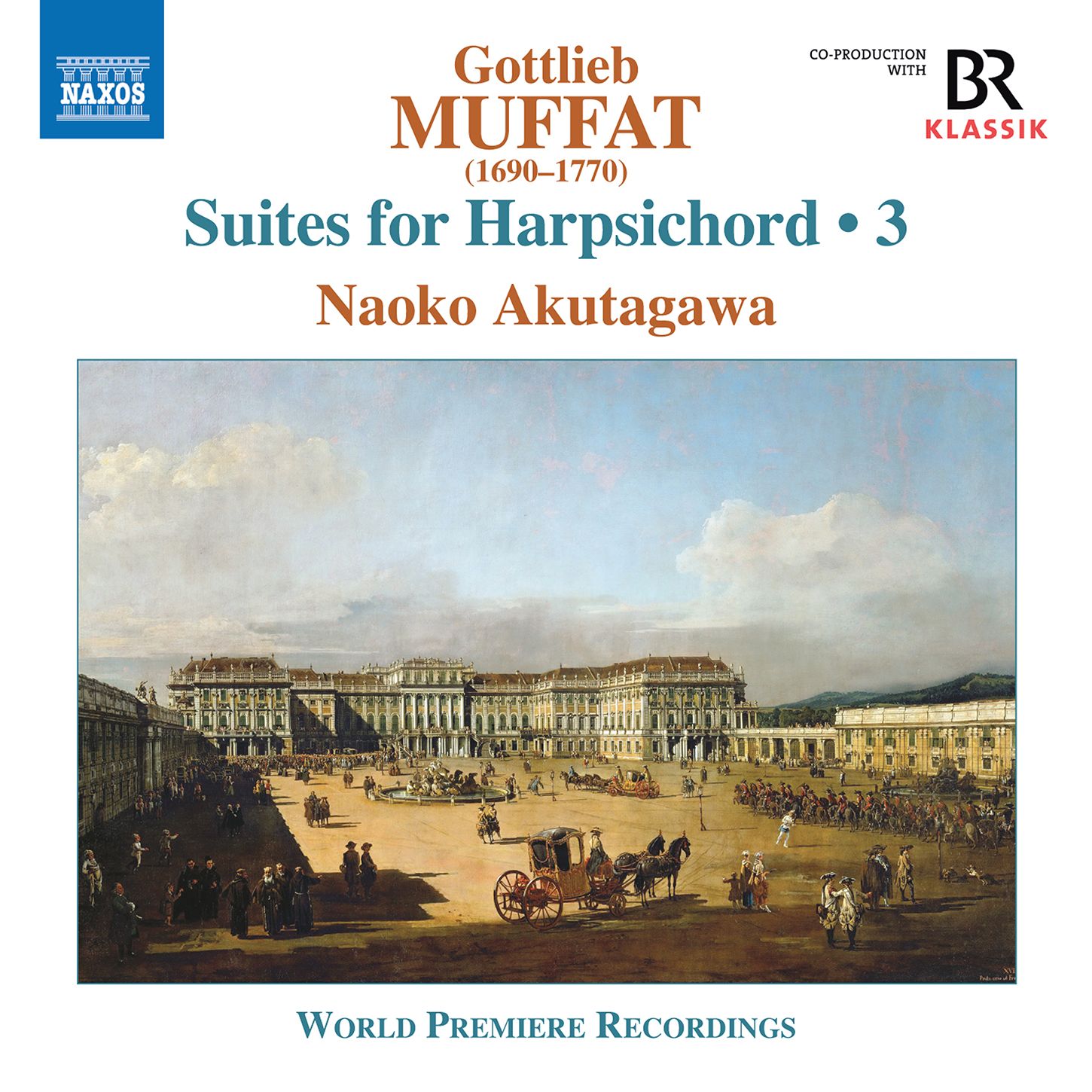Gottlieb Muffat: Harpsichord Suites
This is a major release that could threaten to get lost in the release lists were it not for a little push in the right direction

So first up, this is Gottlieb (1690-1770) not Georg Muffat (whose dates were 1653-1704;. Georg was Gottlieb's father); Gottlieb was a pupil of Johann Joseph Fux (c. 1660-1741); we can place him alongside Telemann and the lesser-known Johann Matheson (1681-1764, known as both composer and music theorist, especially via his 1739 tratise Der vollkommene Capellmeister.
Gottlieb Muffat spent a lot of his life in Vienna; Manfred Bukofzer in Music from the Baroque Era notes that no less a figure than Handel "borrowed" from Gottlieb (particularly from Muffat's Componimenti musicali, which Akutagawa has also recorded for Naxos; the publication of the score of that piece includes an incredibly valuable table of ornaments).
What is fascinating in Muffat's works is a "compound style" which includes elements of the high Italian Baroque and the lightness of the French school. Such is the freshness of this music that it seems inconceivable that this 67 minutes of music comprises entirely world premiere recordings.
We join Naolo Akutagawa's survey of Muffat harpsichord music at its conclusinon, the third of three columes. The format of the five Suites on this recording is of Prelude (often in "free" style) followed by the core Suite movements (Allemande-Courante-Sarabande-Gigue) with the traditional interpolation of various other movements: three of the Suites here have eight movements, the fourth (D minor) ten. Listen to Akutagawa's way with the Sarabande of the D major Suite (the third on this disc): dignified, but listen to how she brings out Muffat's glorious inspiration and adventuresome writing:
Upon purchase, one might well be somewhat taken aback by the seond movement of the G minor Suite, the second heard on the disc, entitled "Le Bastard". These sort of character pieces were typical of François Couperin, and Muffat clearly delights in them too:
Muffat's imagination seems vast. Take the superb Sarabande from the D major Suite:
The Preludes seem to be closely related to the ummeasured preludes we might also find in Couperin. Take the freedom of the Prelude to the G minor Suite:
It is in the mixing of the expected with the extraordinary that Muffat shines. try the gallant dance of the Bourée from the G minor Suite, but notice its more individual traits: certainly, Akutagawa makes the most of these:
Finales are hardly the throw-away gigues we might expect. There is a particularly Handelian rigour to the" finale" (for such is its designation) of the D major Suite mixed with a playfulness that Handel might not quite have countenanced. It's a glorious movement, and a brilliant way to end the Suite - listen to ho Akutagawa delights in the way lines can chase each other:
The A minor Suite is arguably the most sophitsicated here, possibly why the final Gigue feels rather more sedate than most:
Recorded at A=415 Hz on a Henk van Schevikhoven (Helsinki) harpsichord after Ruckers-Hemsch, this is a major release that could threaten to get lost in the release lists were it not for a little push in the right direction.
A wonderful release. Akutagawa is beautifully recorded; the harpsichord itself sounds perfect. But it is the sense of style that is so impressive here. Click the Amazon link below: you won't be disappointed!
